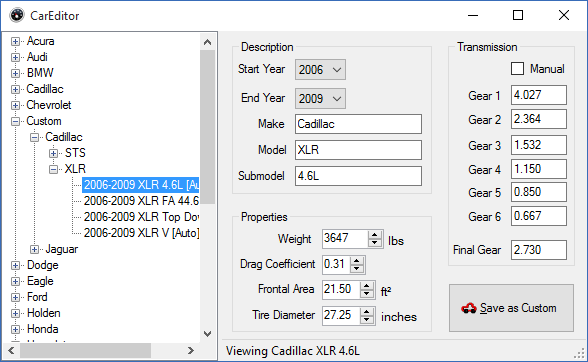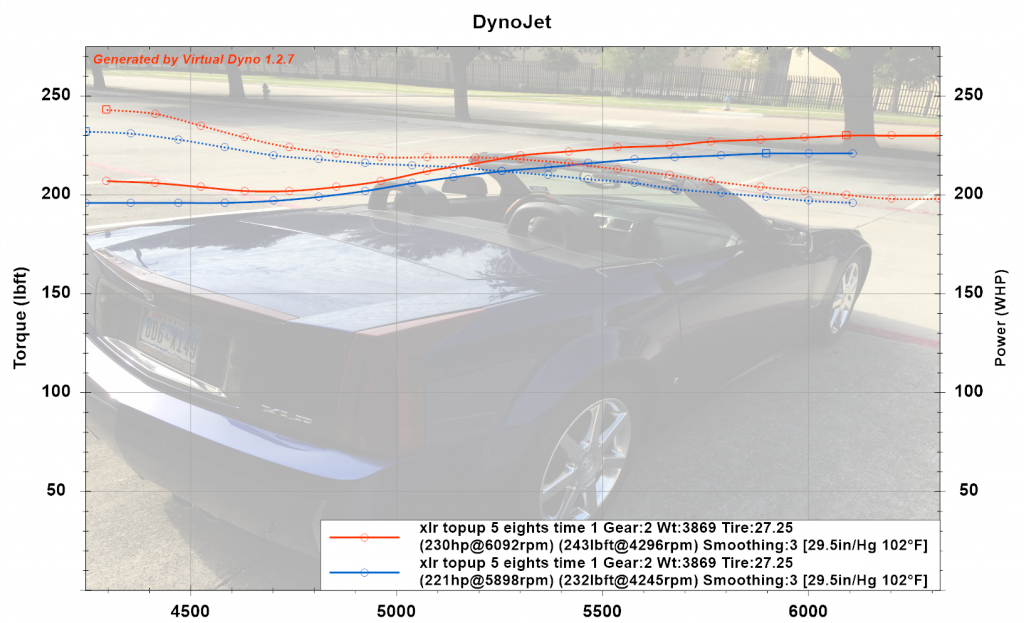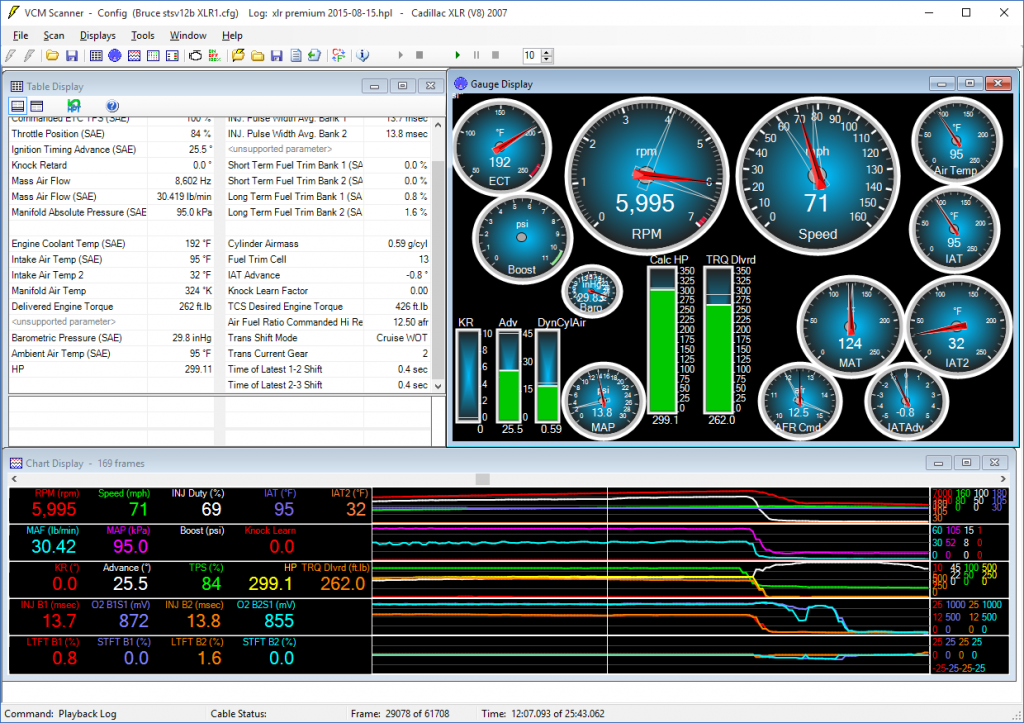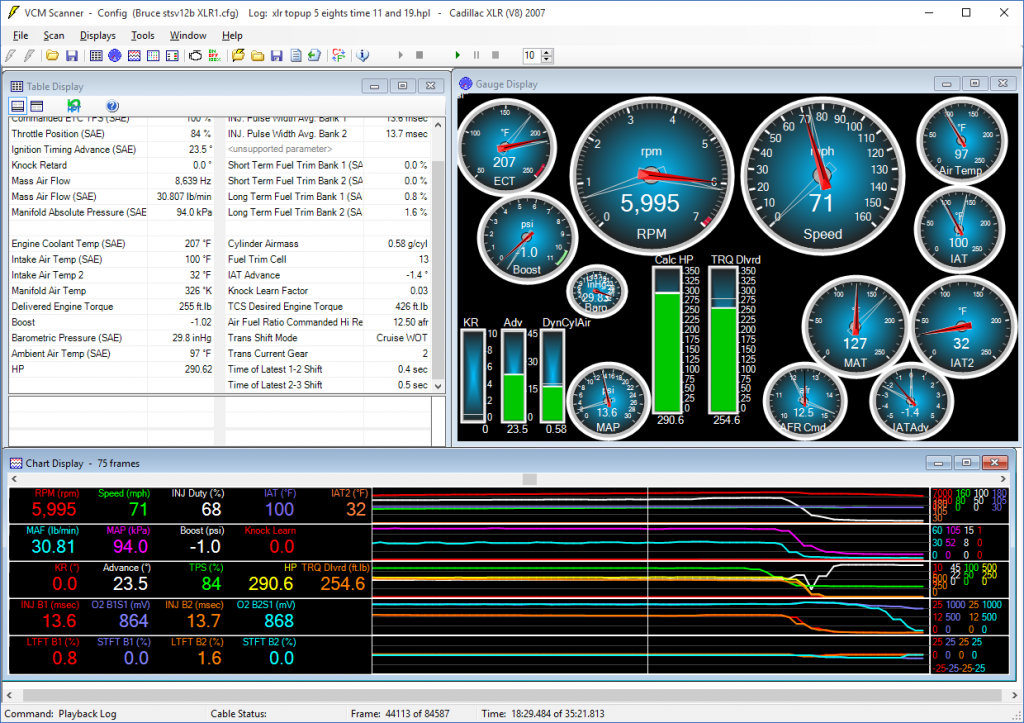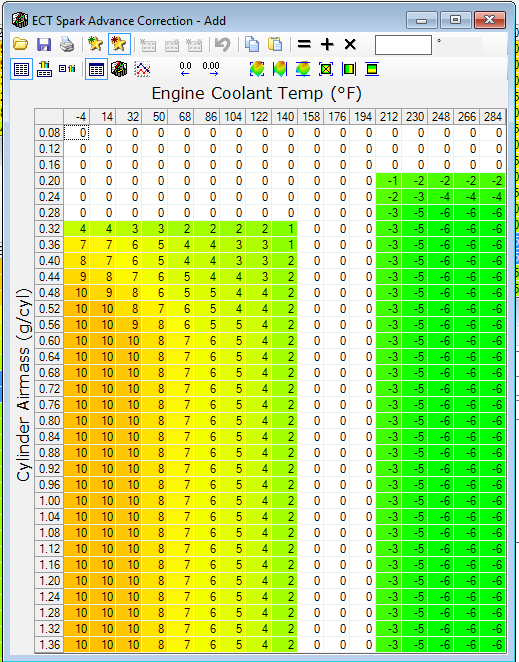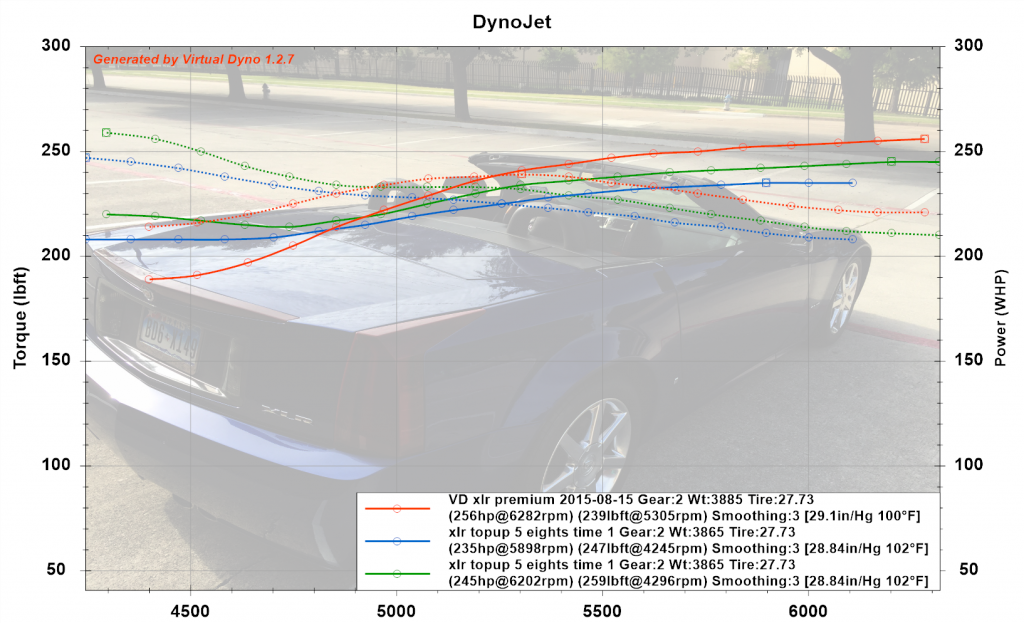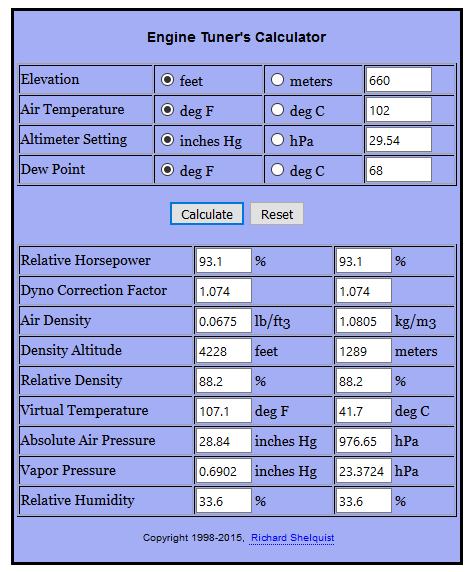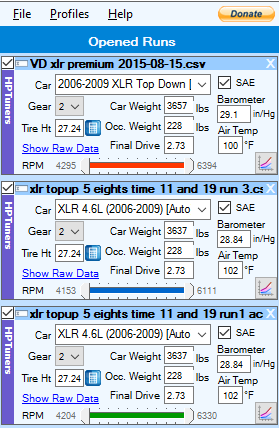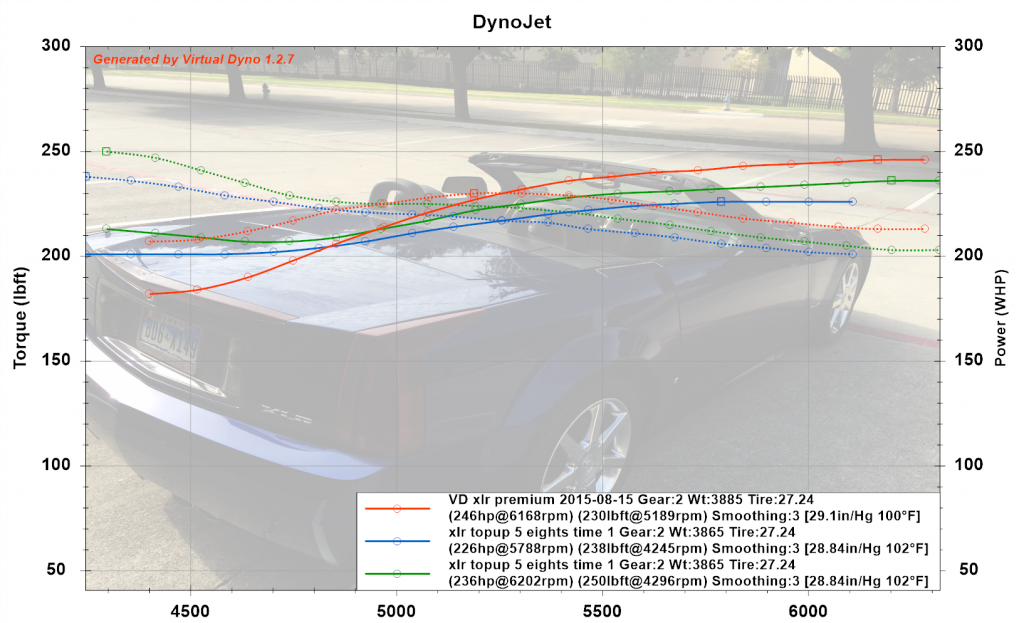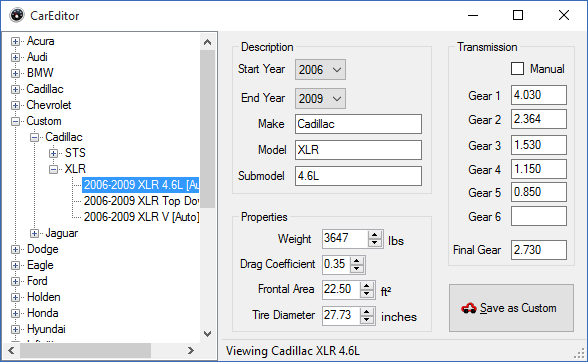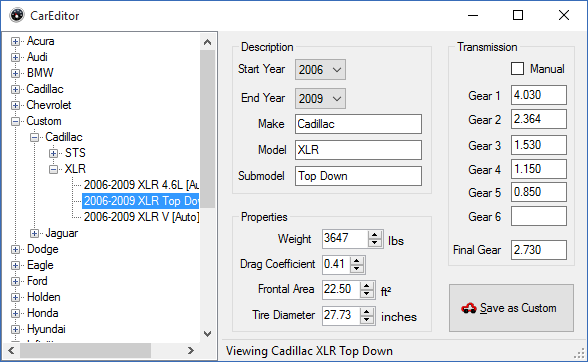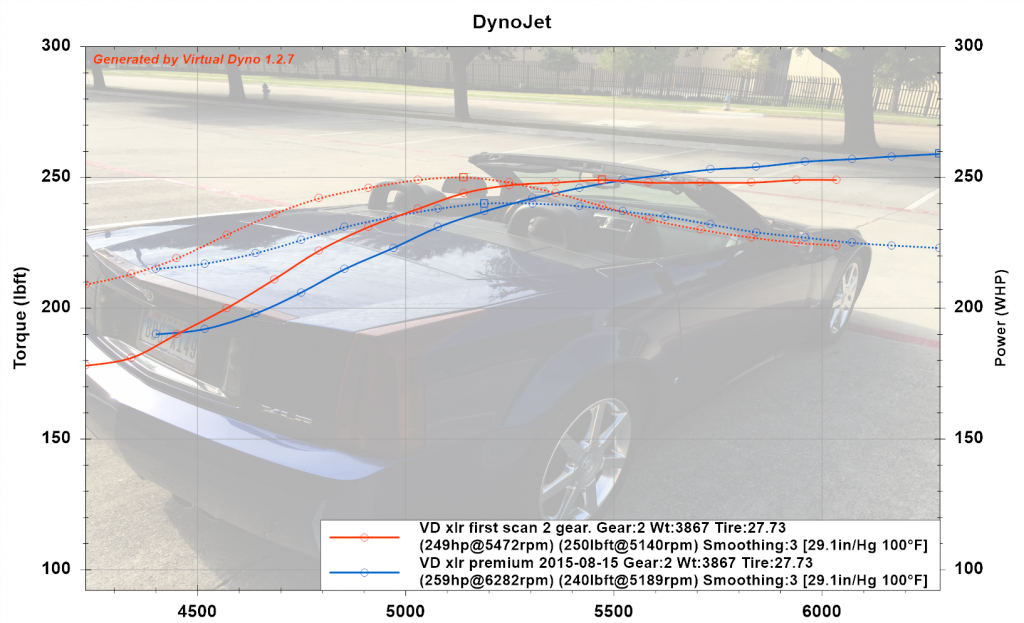Another thought on this topic. My XLR got new tires along the way, and uses Michelin Pilot MXM4 tires, 235/50R-18. The calculated diameter for this size would be 27.3″ per Tire Size Conversion, or 27.25 according to Virtual Dyno. Tirerack lists the actual diameter for this size from this Manufacturer as 27.4″. One would also assume that is on a new tire, and the diameter will shrink as the tire is driven and wears? I have decided to use the Virtual Dyno theoretical calc of 27.25″ based on tire size of 235/50-18.
As a convention, I am going to put test equipment into Driver Weight, and remove gas used from car weight. So Driver weight will include laptop, hptuner interface, etc. Car weight for the XLR is 3647, which I assume is full of fuel. So on the sample runs tomorrow I estimated the car was down 3 gallons at 6 lb/gal and deducted 18 lbs.
Virtual Dyno doesn’t adjust for altitude, so I am going to leave that out as well. Plano is at 600+ feet of altitude, so we will just know the readings are lower than sea level.
Frontal Area & CD — in 2004 preproduction test C&D quoted a frontal area of 22.4 ft2 and a CD of 0.35. Cadillac marketing said the CD was 0.31, which is what I am using. In 2006 XLR-V testing C&D quoted CD 0.33 x frontal area 44.6 ft2. That is a large difference.
From a thread on Virtual Dyno on HpTuners, The quick way to calculate frontal area is (((w*h)(0.85))/12)/12 = Frontal Area.
For the 2007 base XLR, W=72.3in, H=50.4in so for a first approximation (((72.3*50.4)*.85)/12/12)= 21.5 ft2.
Okay, so that settles a convention for Weight, Driver Weight, Drag Coefficient, Frontal Area, Tire Diameter, and I updated the gearing to match spec for 2007.
This chart only shows runs from yesterday. The next task is to get more data with the same baseline to look for consistency.
UPDATE:
Studying the HP Tuner results, it appears yesterday’s run actually was lower hp due to higher engine coolant temps. The ECT negative advance kicks in within that range.
This is the ‘before’ or premium comparison file showing 192F temps and 25.5 degrees of advance at 5995 rpm.
This is yesterday’s run showing 5995 RPM has only 23.5 degrees of advance because engine coolant temp has hit 207F.
This is a file from hptuners showing the ECT base advance adder going from 0 at 194F to -3 at 212F, so in this case at 207F adding most of (13/18ths) -3 or -2 degrees of advance.
So the XLR made less power yesterday due to reduced advance from approx 299.1 hp to 290.6 hp due to those 2 degrees of advance.
This type of intricate timing and fueling in response to a variety of inputs makes back to back testing difficult, but I appreciate the insight that the tools like hptuners provide.

